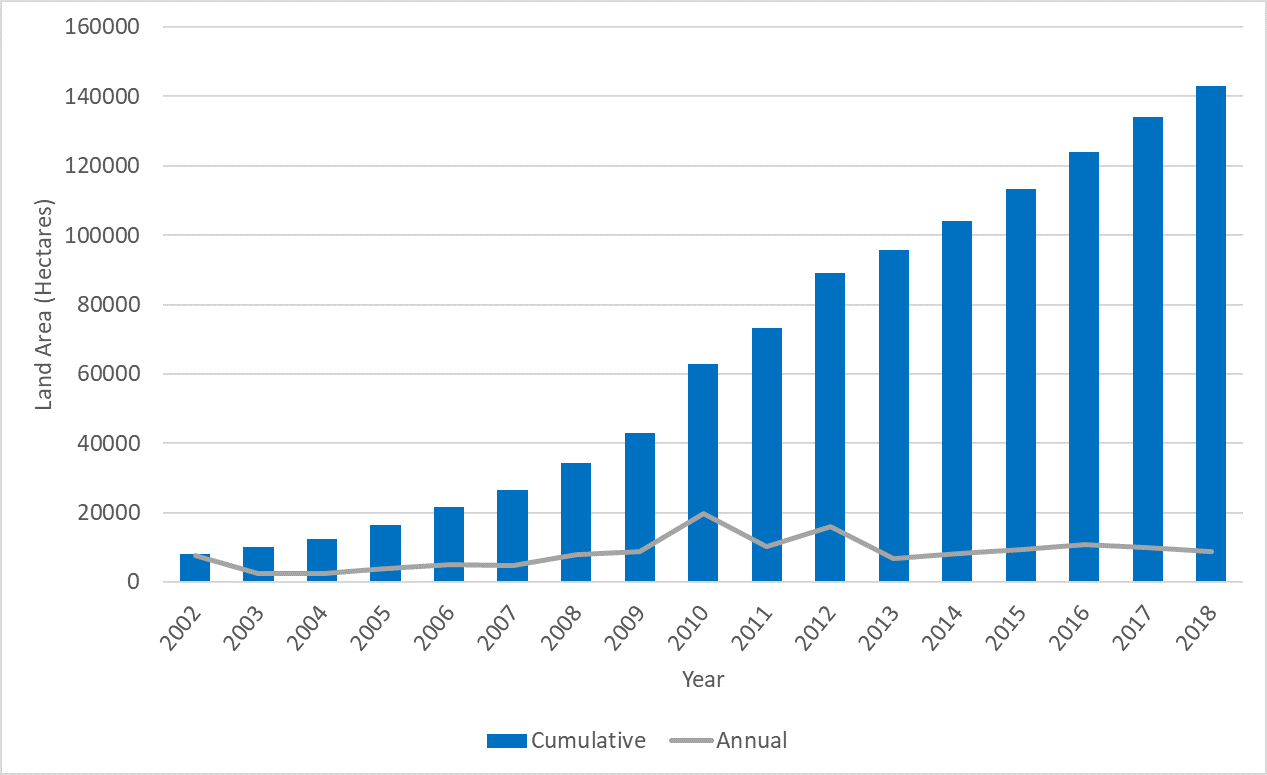
Figure 1. Annual and cumulative land area with stewardship activities in Ontario, 2002–2018 (Source: Ducks Unlimited Canada, Conservation Ontario, Nature Conservancy of Canada, Ontario Federation of Anglers and Hunters, Ontario Power Generation and Ontario Ministry of Natural Resources Stewardship Program).
Note: Data for the Ontario Ministry of Natural Resources Stewardship Program was only available for the years 2004–2018. Data for the Ontario Federation of Anglers and Hunters was only available for the years 2010–2018.
Status:
- Between 2002 and 2018, the annual amount of land stewarded in Ontario increased from 7,395 hectares to 8,869 hectares, representing an overall increase of 19% or an average annual increase of 1.2%. This increase is, in part, related to refinement in data collection efforts.
- Over time there has been some annual variability in the amount of land stewarded in Ontario, however since 2002 there has been a significant increase in the cumulative amount of land stewarded, from just under 8,000 ha in 2002 to over 140,000 hectares in 2018. Annual land stewardship activities are influenced by many different factors including (e.g. information, resources, incentives, etc.).
This indicator presents an index of the amount of land area that is being actively stewarded in Ontario based on data maintained by four conservation organizations (Nature Conservancy of Canada, Ducks Unlimited Canada, Ontario Nature, the Ontario Federation of Anglers and Hunters), and various public bodies (Ontario Ministry of Nature Resources — Ontario Stewardship Program, Ontario Power Generation and the 36 conservation authorities in Ontario). As such, this indicator does not reflect all stewardship activities occurring across Ontario, for the purposes of this indicator, stewardship activities included a variety of habitat restoration, rehabilitation and enhancement activities between the years 2002 and 2018.
At first glance, a sand or gravel pit may not seem a likely place to find innovation in biodiversity. But look beyond the piles of sand and stone, and you’ll soon discover the enormous care Ontario’s aggregate producers take to ensure biodiversity. Rehabilitated pit As stewards of Ontario’s aggregate resources (stone, sand and gravel), aggregate producers work hard to be good neighbours and land stewards by implementi…
Read MoreMeasuring the Benefits of Best Management Practices in Gully Creek Intermittent channels across the land contribute to poor water quality during storms. Runoff and erosion can add sediment to surface water such as creeks, rivers, and lakes. High levels of suspended sediment can negatively affect aquatic species by clogging gills, impairing the quality of fish habitat, limiting the ability of ‘sight feeders’ to feed, reducing growth, and limiting disease tolerance. The negative effects of thi…
Read More

